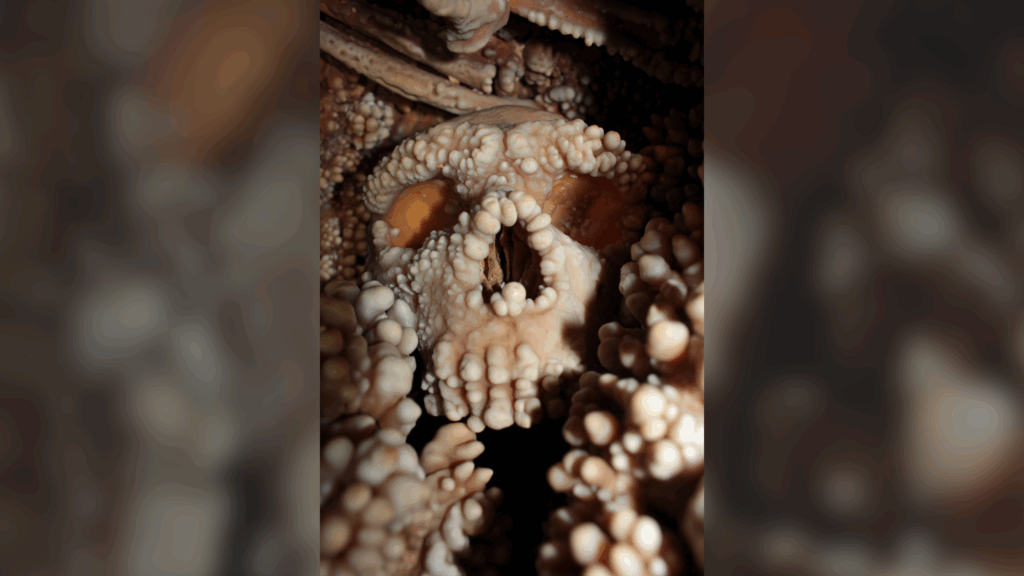
A groundbreaking digital analysis of the well-preserved nasal bones of a Neanderthal skull, known as the “Altamura Man,” has cast doubt on a long-standing theory regarding the evolution of Neanderthal noses. Discovered in 1993 in a cave near Altamura, southern Italy, this skull is one of the most complete Neanderthal skeletons ever found. Due to its encasement in a thick layer of calcite, the skeleton remains in situ to avoid damage, offering a rare glimpse into Neanderthal anatomy.
The study, published in the journal Proceedings of the National Academy of Sciences (PNAS), reveals that the nasal cavity of Altamura Man is unlike any other in the human fossil record. This discovery provides crucial insights into whether Neanderthal facial structures were adapted to cold climates. “The general shape of the nasal cavity and nasal aperture in Neanderthals follows a quite constant trend,” explained Costantino Buzi, the study’s lead author and a paleoanthropologist at the University of Perugia.
Revisiting Neanderthal Nasal Anatomy
For years, scientists theorized that Neanderthals’ large noses were evolutionary adaptations to cold, dry environments, aiding in warming and humidifying the air before it reached their lungs. However, previous studies relied on approximations due to the fragile nature of the nasal bones, which were often broken or missing in other Neanderthal remains.
Buzi and his team employed “virtual paleoanthropology” techniques to digitally document the Altamura Man’s nasal structures without removing the specimen from the cave. Using endoscopic probes, they captured video footage from inside the nasal cavity and created the first 3D photogrammetric models of Neanderthal nose bones.
Findings Challenge Established Theories
Upon analyzing the images, researchers discovered that Altamura Man’s nasal structures were not significantly different from those of modern humans. This finding contradicts the notion that Neanderthal noses were uniquely adapted to cold climates. Despite the rest of the Neanderthal’s body showing adaptations to cold, such as shorter limbs and a stockier build, the nose did not follow this pattern.
Todd Rae, a paleoanthropologist at the University of Sussex, who was not involved in the study, noted, “Two of the three previously proposed unique features of the Neanderthal nasal cavity do not appear to be present in this specimen.” Rae further emphasized that this lack of unique traits indicates a previously unrecognized variation within the species.
Broader Implications and Future Research
The study suggests that Neanderthals may have exhibited intraspecies variability, although Buzi cautions that concrete evidence remains limited to the Altamura specimen. Rae posits that the size of Neanderthal noses may not be linked to cold weather adaptations. “All earlier species of Homo have wide noses,” Rae explained, adding that most Homo sapiens also possess wide noses, except for a small proportion of northern European and Arctic populations.
Instead of viewing the Neanderthal nose as a specialized adaptation, it might be better understood as an efficient mechanism for regulating the temperature and humidity of inhaled air to support their massive bodies. Buzi suggests that various environmental pressures and physical constraints likely shaped the Neanderthal face, resulting in a functional model for the harsh climate of the European Late Pleistocene.
This research opens new avenues for understanding human evolution and highlights the importance of technological advancements in paleoanthropology. As scientists continue to explore the Altamura Man and other Neanderthal remains, they may uncover further insights into the complex evolutionary history of our ancient relatives.







